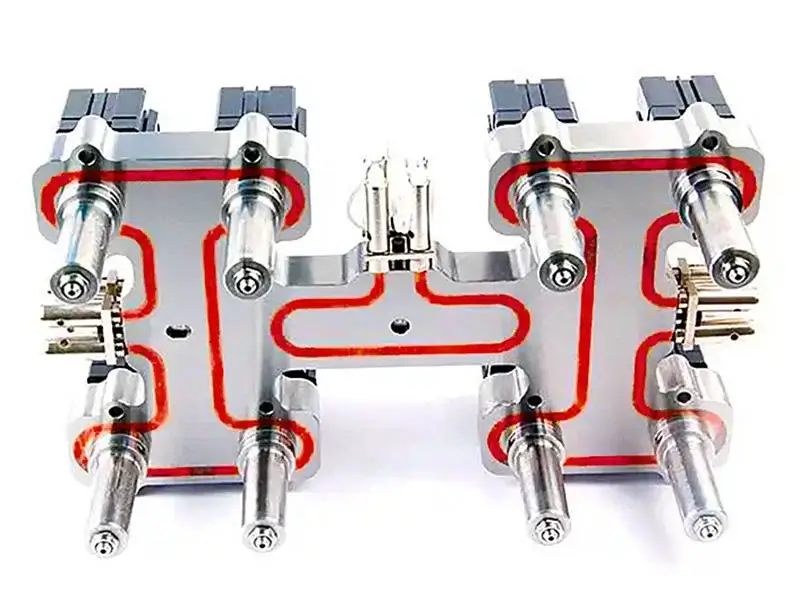The rubber molded process places the mixed rubber in a mold and uses a flat vulcanizing machine to press it under the specified time, pressure, and temperature conditions. Its products are called rubber molded products.

The rubber molding process includes material filling, mold closing, vulcanizing, de-molding, and mold cleaning. As mentioned earlier, the rubber compound should be hotly smelted before vulcanization should be cut into a suitable shape and size, and then loaded into a mold preheated to the specified temperature for vulcanization, after a certain period, the rubber compound becomes a vulcanized product. During the rubber molding process, to remove the air in the mold cavity and the volatile in the rubber compound and avoid defects such as stuffiness, pre-pressing can be carried out 2-3 times in a row. This operation is called “degassing”. Whether degassing is required or not depends on the material, product shape, and mold structure.
Choosing a suitable rubber material is key to the success of rubber molding project, read our guide: Rubber Material Selection Guide.
Vulcanization quality greatly influences the quality of the rubber-molded parts. The main factors affecting the vulcanization quality are vulcanization time, temperature, and pressure.
Rubber Molded Parts Vulcanization Time
When the sulfur-containing raw rubber is heated and vulcanized, the sulfur and the raw rubber will react chemically to produce structural changes. The amount of bound sulfur is related to the curing time. When the temperature is constant, free sulfur decreases with the increase of reaction time, that is, the amount of bound sulfur increases gradually. If the time is not enough, the product will be under-sulfur; if the time is too long, there will be over-sulfur. Both of these are detrimental to the product and should be avoided.
Rubber Molded Vulcanization Temperature
The change of temperature has a great influence on the speed of the vulcanization reaction. The average vulcanization temperature increases by 10 °C, and the vulcanization speed can be doubled, that is, the vulcanization time can be shortened by about half. The vulcanization temperature increases, the vulcanization speed increases, and the production capacity of the equipment increases. However, the vulcanization temperature should not be too high, because, during high-temperature vulcanization, the oxygen dissolved in the rubber compound will easily cause the oxidation reaction of the rubber, which will reduce the aging resistance of the product. If there are fibers in rubber products, they will be destroyed after high temperatures, which will greatly reduce the strength of the products. At the same time, due to the poor thermal conductivity of rubber, it is difficult to make the product reach high temperatures uniformly.
Rubber Molded Vulcanization Pressure
In the vulcanization process, the vulcanizing agent reacts with the raw rubber in a non-gas phase reaction, and the pressure has little effect on the reaction speed. However, the rubber compound often contains moisture, adsorbed air, and dissolved gas. During the vulcanization process, due to the heating of the rubber compound, the water evaporates the decomposition of some compounding agents and the hydrogen sulfide and other gases released by the side reaction of vulcanization, which will cause defects like air holes or degumming. Vulcanization under pressure can eliminate these defects, and at the same time, due to the increased density of the product, the wear resistance and aging resistance are also improved. Of course, the pressure should not be too large. When the pressure is too large, the performance of the rubber molded parts will not be improved much, but it will consume a large amount of equipment power. It should be noted that if the vulcanization pressure fluctuates too much, it will affect the uniformity of product size.




